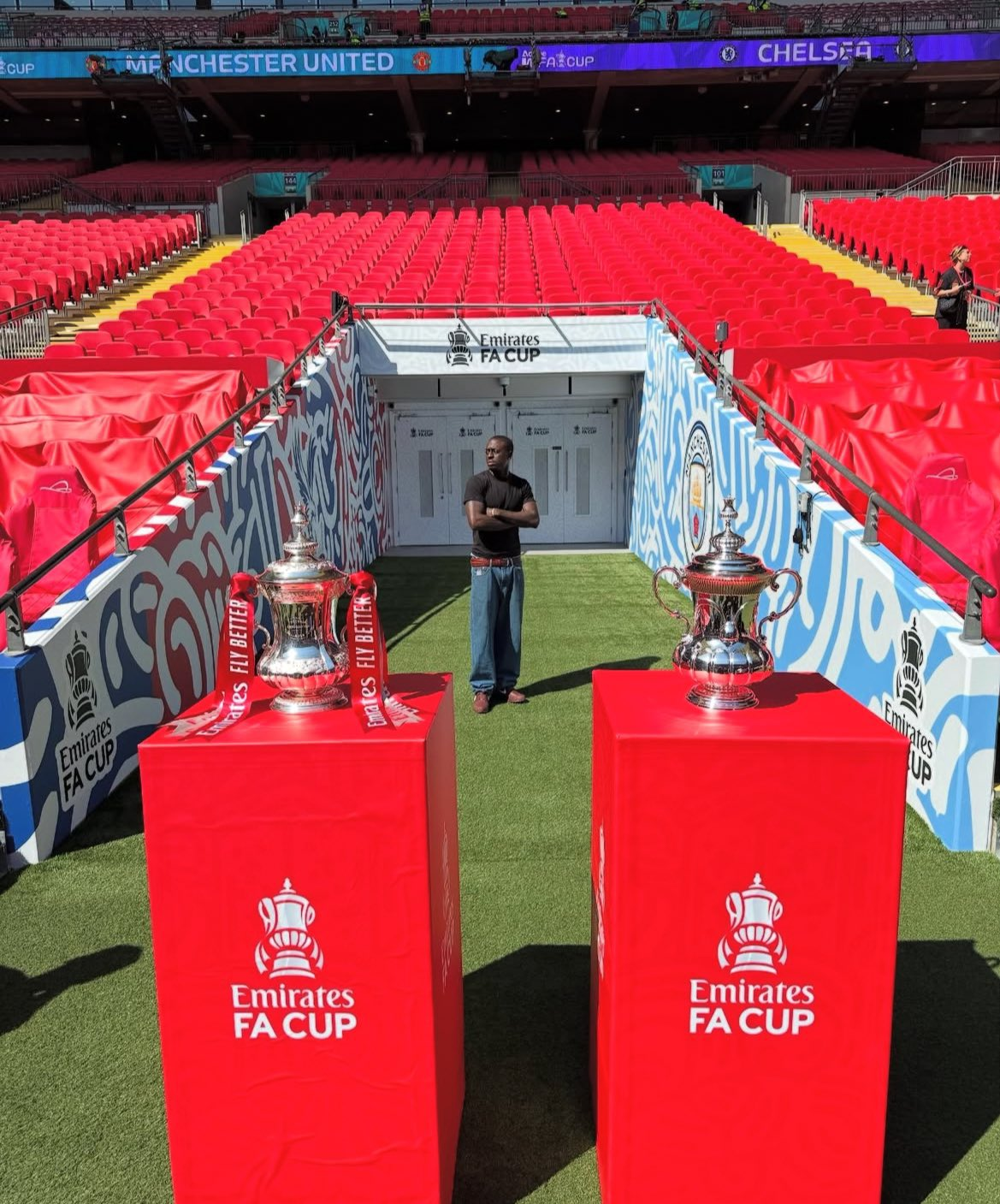

In a bold and unprecedented move blending football heritage with contemporary culture, the Football Association (FA), Wembley Stadium, and Nigerian-born British artist Olaolu Slawn joined forces for a groundbreaking activation surrounding the 2024 Emirates FA Cup Final. This multi-dimensional collaboration, aptly named “Cup Culture,” not only reimagined one of the world’s most iconic trophies but also pushed the boundaries of what a football final experience could look like in the 21st century.
At the heart of the collaboration was the complete reimagination of the FA Cup trophy–one of football’s most cherished symbols–through the eyes of Slawn. The 23-year-old artist, known for his chaotic, colorful graffiti-meets-pop-art style, was commissioned to design a bespoke, one-off replica of the trophy. In partnership with Thomas Lyte, the official silverware provider for the FA, Slawn brought his artistic vision to life in a way never before seen in football history. The creative process began in Thomas Lyte’s workshop in London, where Slawn sketched directly onto a blank silhouette of the FA Cup using his signature marker pen. His designs were then translated into a high-resolution 3D model, which was 3D printed, electroformed with silver, and fused with traditionally fabricated elements like cast brass handles and a spun metal foot. Each component was meticulously polished and assembled, resulting in a masterful blend of classic craftsmanship and modern design sensibility.
More than just a visual reinterpretation, Slawn’s version of the trophy bore deep personal symbolism. The finial at the top of the trophy featured 23 spheres and teeth, representing his age at the time of design. His unique pen-style signature was engraved on the back, alongside the logos of the FA and Thomas Lyte, while his trademark tagline, “Amen,” was etched into the body, cementing the piece as an extension of his artistic identity and spiritual ethos. This reinterpretation marked the first time in the FA Cup’s 153-year history that such a radical artistic spin was applied to its revered trophy, transforming it from a symbol of footballing glory into a canvas for cultural expression.
The unveiling of this modernized trophy served as the centerpiece of the “Cup Culture” event–an immersive experience hosted at Oval Studios in East London just days before the final. Attended by nearly 700 guests, the event was a melting pot of music, fashion, gaming, and urban culture. UK rap star AJ Tracey lit up the stage with a live performance, while Tobi Brown, better known as TBJZL of The Sidemen, hosted a competitive EAFC tournament featuring teams from globally recognized fashion and streetwear brands like Bape, Unknwn, and Percival. The activation also featured immersive experiences including VR football, live graffiti walls, fashion booths, sneaker giveaways courtesy of Kick Game, and a fan-favorite “fit check” photo station by Footballers Fits. Wingstop provided complimentary food, adding a flavorful layer to the already multi-sensory celebration.
Slawn’s involvement was more than symbolic; it marked a pivotal moment in how football can intersect with youth-driven subcultures. His work with the FA and Wembley further underscores his rising profile and the FA’s commitment to embracing diverse, contemporary voices within football’s evolving narrative.
The “Cup Culture” activation and Slawn’s stunning reinterpretation of the FA Cup trophy signal a turning point for the beautiful game’s cultural engagement. What was once solely about the 90 minutes on the pitch is now a full-fledged cultural moment–one that celebrates creativity, individuality, and cross-industry collaboration. Through this powerful partnership, the FA sent a clear message: football belongs to everyone, and its future is as dynamic, diverse, and artistic as the communities that breathe life into it.



